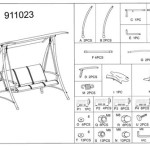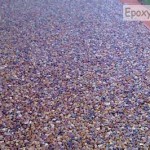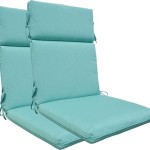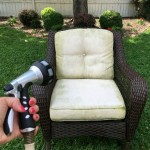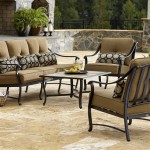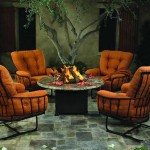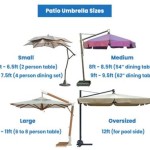8 Foot Patio Door With Blinds: A Comprehensive Guide
Patio doors serve as a crucial architectural element, connecting indoor living spaces with outdoor environments. They enhance natural light, provide easy access to patios, decks, and backyards, and contribute significantly to a home's aesthetic appeal. When selecting a patio door, dimensions are a primary consideration, and an 8-foot patio door offers a grand opening that can dramatically transform a room. Integrating blinds within the door structure provides a convenient and streamlined solution for light control and privacy, eliminating the need for separate window treatments.
This article delves into the details of 8-foot patio doors with built-in blinds, exploring the benefits, considerations, material options, operational styles, cost factors, and installation processes. It aims to provide a comprehensive overview to facilitate informed decision-making for homeowners considering this type of door.
Key Point 1: Benefits of 8-Foot Patio Doors with Built-In Blinds
Choosing an 8-foot patio door with integrated blinds offers a multitude of advantages over standard-sized doors and separate blind systems.
Enhanced Natural Light: The expansive size of an 8-foot patio door allows for a significant influx of natural light. This increased illumination can brighten interior spaces, reduce the need for artificial lighting during the day, and improve overall ambiance, creating a more welcoming and cheerful environment. Maximizing natural light contributes to energy efficiency and can positively impact mood and well-being.
Seamless Indoor-Outdoor Connection: An 8-foot opening fosters a stronger visual and physical connection between indoor and outdoor spaces. This connection is particularly beneficial for homes with patios, decks, or well-maintained gardens. The wide opening allows for easy transition between indoor and outdoor living, creating a sense of expanded living space and facilitating outdoor entertaining.
Space Optimization and Aesthetics: Built-in blinds eliminate the need for external window treatments, such as curtains or traditional blinds. This contributes to a cleaner, more minimalist aesthetic, maximizing usable space around the door. Integrated blinds are protected between the glass panes, preventing dust accumulation, damage, and the need for frequent cleaning. This also ensures a uniform and cohesive look, enhancing the overall design of the room.
Privacy and Light Control: The integrated blinds offer precise control over privacy and light levels. They can be easily adjusted to filter sunlight, reduce glare, or completely block light for enhanced privacy. The ease of operation allows for quick adjustments as needed throughout the day. This is particularly beneficial for bedrooms or living rooms where light control and privacy are paramount.
Energy Efficiency: Many 8-foot patio doors with built-in blinds are designed with energy-efficient features, such as Low-E glass and insulated frames. Low-E glass reduces heat transfer, helping to keep the interior cooler in the summer and warmer in the winter. Insulated frames further minimize heat loss and gain, contributing to lower energy bills and a more comfortable living environment. The insulated blinds themselves can also provide an additional layer of insulation.
Durability and Low Maintenance: Built-in blinds are protected from the elements, reducing wear and tear. This extends their lifespan and minimizes maintenance requirements. The sealed environment between the glass panes prevents dust and allergens from accumulating on the blinds, making them a healthier option for allergy sufferers. The door frames themselves are typically made from durable materials such as vinyl, fiberglass, or aluminum, which are resistant to rot, corrosion, and insect damage.
Key Point 2: Material Options and Operational Styles
The material of the door frame and the operational style significantly affect the performance, aesthetics, and cost of an 8-foot patio door with built-in blinds.
Frame Materials:
Vinyl: Vinyl is a popular choice for patio door frames due to its affordability, low maintenance requirements, and energy efficiency. Vinyl frames are resistant to rot, warping, and insect damage. They are also available in a variety of colors and can be easily cleaned with soap and water. However, vinyl frames may not be as structurally strong as other materials and may not be suitable for very large or custom-sized doors.
Fiberglass: Fiberglass offers superior strength and durability compared to vinyl. Fiberglass frames are also resistant to rot, warping, and insect damage. They can withstand extreme temperatures and are less prone to expansion and contraction. Fiberglass frames can be painted or stained to match any décor. However, fiberglass frames are typically more expensive than vinyl frames.
Aluminum: Aluminum frames are lightweight, strong, and corrosion-resistant. They are a good choice for coastal areas where exposure to salt air is a concern. Aluminum frames can be powder-coated in a variety of colors and finishes. However, aluminum is not as energy-efficient as vinyl or fiberglass, and it can conduct heat and cold, leading to higher energy bills. Thermal breaks can be incorporated into aluminum frames to improve their energy efficiency.
Wood: Wood frames offer a classic and elegant look. They can be stained or painted to match any décor. However, wood frames require more maintenance than other materials and are susceptible to rot, warping, and insect damage. Wood frames also need to be regularly sealed or painted to protect them from the elements. Wood frames are typically the most expensive option for patio door frames.
Operational Styles:
Sliding Patio Doors: Sliding patio doors are the most common type of patio door. They consist of two or more panels that slide horizontally along a track. Sliding patio doors are easy to operate and require minimal space to open. They are a good choice for rooms with limited space. Sliding doors are available in various configurations, including two-panel, three-panel, and four-panel models. The tracks should be made of durable materials to ensure smooth operation over time.
French Patio Doors: French patio doors consist of two hinged doors that swing inward or outward. French patio doors offer a more traditional look and can provide a wider opening than sliding patio doors. French doors require more space to operate and may not be suitable for rooms with limited space. They can be configured to swing inward or outward, depending on preference and space constraints. French doors may offer a more classic or formal aesthetic compared to sliding doors.
Folding Patio Doors (Bifold Doors): Folding patio doors, also known as bifold doors, consist of multiple panels that fold together like an accordion. Folding patio doors offer the widest possible opening and can completely blur the line between indoor and outdoor spaces. Folding patio doors are a good choice for creating a seamless transition to a patio or deck. They are typically more expensive than sliding or French patio doors. The hardware for folding doors must be robust to ensure smooth and reliable operation.
Key Point 3: Cost Factors and Installation Considerations
The overall cost of an 8-foot patio door with built-in blinds is influenced by several factors, including the materials used, the operational style, the complexity of the installation, and any additional features.
Cost Factors:
Material: The frame material significantly impacts the cost. Vinyl is generally the most affordable, followed by aluminum, fiberglass, and wood. The type of glass used also affects the price. Options include single-pane, double-pane, triple-pane, and various Low-E coatings. The quality and type of the integrated blinds also factor into the cost, with different materials and operating mechanisms available.
Size and Configuration: Larger doors and more complex configurations (e.g., multi-panel folding doors) will generally cost more. Custom sizes and designs will also increase the price compared to standard models. The thickness of the glass and frame also plays a role in the cost.
Operational Style: Folding patio doors are typically the most expensive, followed by French doors and sliding doors. The complexity of the hardware and the engineering required contribute to the price differences.
Installation: Professional installation is highly recommended to ensure proper sealing, operation, and warranty coverage. Installation costs vary depending on the complexity of the project, the need for structural modifications, and regional labor rates. Removing an existing door and preparing the opening can add to the installation expenses. Structural modifications, such as widening the opening, can significantly increase the cost.
Additional Features: Features such as integrated screens, decorative glass, custom hardware, and smart home integration can increase the overall cost. Grids between the glass panes can add a decorative touch but also increase the price. Automated blind control systems can also enhance convenience but add to the expense.
Installation Considerations:
Professional Installation: Proper installation is critical to ensure the door's performance, energy efficiency, and longevity. It is generally recommended to hire a qualified and experienced contractor for the installation. A professional installer will ensure that the door is properly aligned, sealed, and operates smoothly.
Opening Preparation: The existing opening must be properly prepared to accommodate the new door. This may involve removing the old door, leveling the sill, and ensuring that the opening is square and plumb. The opening must also be adequately flashed to prevent water damage.
Structural Integrity: Ensure that the surrounding wall can support the weight of the new door, particularly for large or heavy models. Consult with a structural engineer if necessary to assess the structural integrity of the wall.
Permits and Regulations: Check local building codes and regulations to determine if any permits are required for the installation. Some areas may have specific requirements for energy efficiency or safety features.
Warranty: Review the warranty offered by the manufacturer and the installer. Ensure that the warranty covers both the door and the installation. Understand the terms and conditions of the warranty, including what is covered and what is not.
In summary, an 8-foot patio door with integrated blinds presents a significant investment that can enhance the aesthetic appeal, functionality, and value of a home. Carefully considering the benefits, material options, operational styles, cost factors, and installation requirements will help homeowners make an informed decision and select the best option for their specific needs and budget.

8 0 Tall Mini Blinds Fiberglass Patio Door Unit Clearance Center

Between The Glass Blinds For Patio Doors Pella

Between The Glass Blinds For Patio Doors Pella

Pella Lifestyle Series Patio Doors At Lowe S

96 In X 80 Patio Doors At Lowes Com

Mp Doors 72 In X 80 Smooth White Right Hand Composite Pg50 Sliding Patio Door With Low E Built Blinds G6068r002wle50 The Home

Jeld Wen 72 In X 80 V 4500 White Vinyl Left Hand Full Lite Sliding Patio Door W Internal Blinds Thdjw155900243 The Home

Reliabilt 36 In X 80 White Aluminum Sliding Patio Screen Door The Doors Department At Lowes Com

Vinyl Patio Door Harvey Windows Doors

French Door Blinds Shades Patio Sliding Glass Window Treatments
See Also

